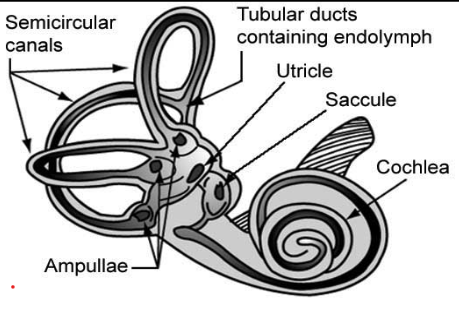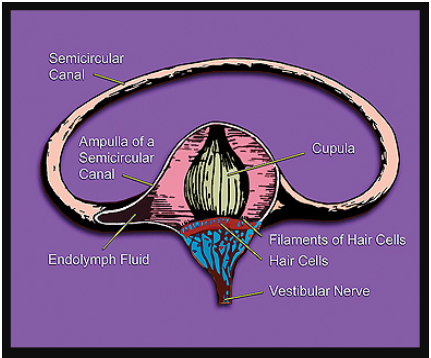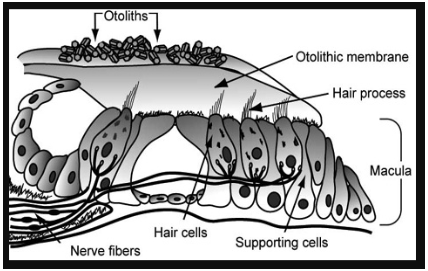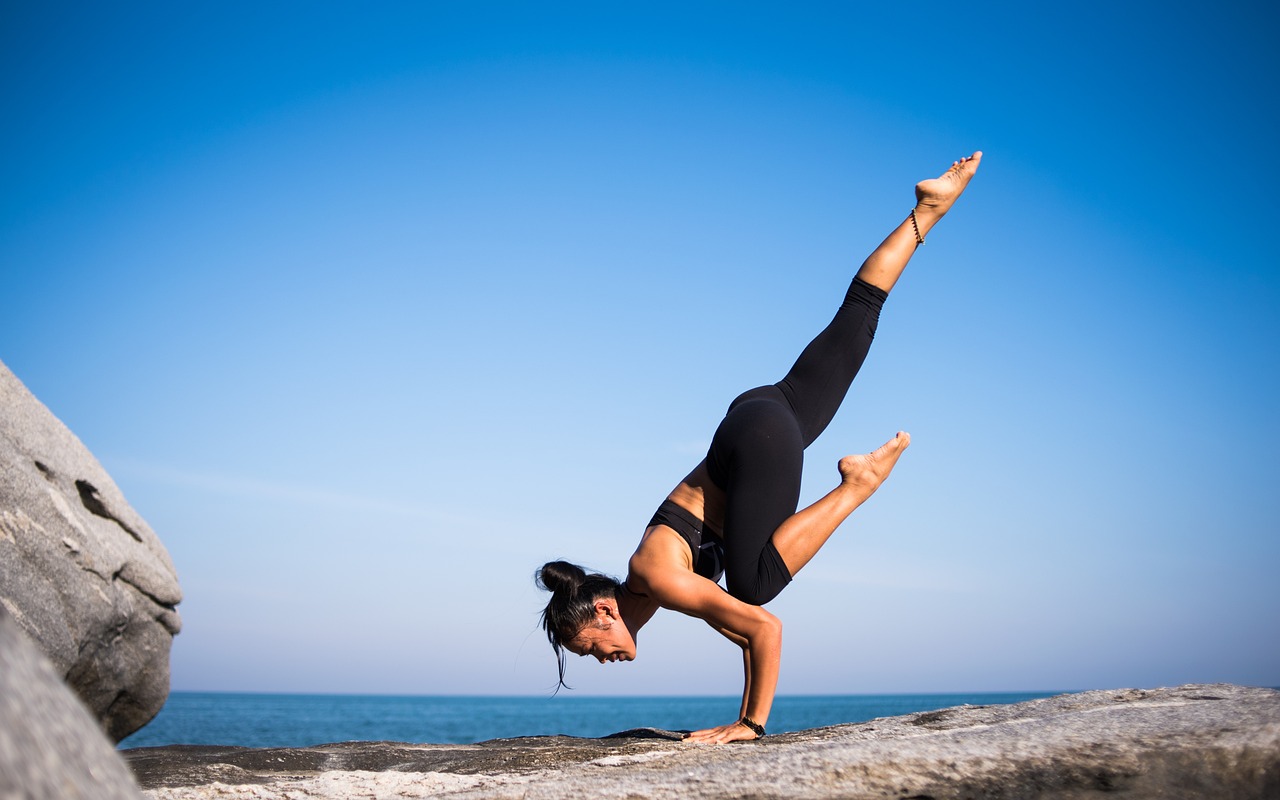Our balance is a highly complex motor response that is derived from the coordinated information exhange between three body systems and our brain. The three body systems are our vestibular (inner ear), visual, and somatosensory (movement and touch sensation) systems. The three body systems gather sensory information from the environment as well as the body. The brain organizes and uses that information to output a proper motor response, which keeps us from falling and helps us to move in a coordinated fashion.
Our vestibular system provides information about where our head is in space. The vestibular system, also known as the vestibular labyrinth, resides in our inner ears and consists of three semicircular canals (posterior, horizontal and anterior) and two otolith organs (saccule and utricle). The semicircular canals sense rotational acceleration of head movement, such as when we turn our heads left or right (yaw), up or down (pitch), or side to side (roll.) While the otolith organs sense linear acceleration and gravity. Such as when moving in a car or riding on an elevator.

Image of the cochlea and the vestibular system organs
The semicircular canals are filled with fluid called endolymph, which moves in the opposite direction of our head movements. This moving fluid moves a structure within the semicircular canal called the cupula (see image below). Within the cupula are hair cells which reside on top of a structure called the crista ampullaris. These hair cells move secondary to the cupula moving. The hair cells moving cause a reaction which in turn stimulates the vestibular nerve. Once the vestibular nerve is stimulated it sends the movement information to our brain.

Image of the cupula within the semicircular canal
The otolith organs (utricle and saccule) are fluid filled (endolymph) sacs which contain an area within them called the macula (see image below). The macula is where the sensory hair cells of the otolith organs reside. The hair cells are encased within a gelatinous structure. Also within the gelatinous structure are small “ear stones” called otoconia (see image below), which reside above the hair cells. The otoconia are more dense (have more mass) than the endolymph fluid within the organ surrounding the gelatinous structure. Their density makes them sensitive to forces of gravity and linear acceleration. So when a person is moving forward or backward or going up or down, the otoconia moves which moves the gelatinous structure and the sensory hair cells within it. The hair cells bending causes a reaction which stimulates the vestibular nerve. The vestibular nerve sends the movement information to our brain.

Image of the macula and otoconia within the otolith organs.
Our visual system provides information about the world moving around us and provides us with proper depth perception when our eyes are moving together appropriately. Our visual system is also linked with our vestibular system through the vestibulo-ocular reflex or VOR. Our VOR is a reflexive response that helps to keep our eyes focused on an object when our head is moving. This allows us to see that object clearly versus blurred. VOR dysfunction is a large contributor to feelings of imbalance and dizziness.
Our somatosensory system provides information to the brain about our body position in space and information about external forces, such as what kind of surface we’re standing on (i.e. tile, grass, sand, etc.) This information is derived from sensory receptors in our skin and sensory receptors in our muscles and joints which is known as proprioception. All of our muscles and joints have proprioceptive receptors, however, when considering our balance, the receptors of primary importance reside in our ankles, lower legs, and neck.
Our somatosensory system is also linked to the vestibular system through the vestibulospinal reflex (VSR) and vestibulocollic reflex (VCR). Collic refers to our neck musculature. Our VSR and VCR are also reflexive muscular responses which helps to keep both our posture (VSR) and head (VCR) stable during movement.
The brain, as can be seen from the above descriptions, plays a huge role in our balance by integrating all these systems. Dysfunction in any of these systems, including injury to the brain, can lead to balance dysfunction. However, the good news is that the body has some built in redundancy within these systems and our balance is multifactorial, which means we can manage a dysfunction in one area of the system by strengthening another or by helping the brain learn to adapt through neuroplasticity. Neuroplasticity is our brain’s ability to form new pathways and connections required in learning and to essentially heal itself. Therapy largely utilizes this gift of neuroplasticity to help individuals recover from balance dysfunction. As can be seen with balance alone, our bodies are truly an amazingly balanced (pun intended) system of multiple interwoven systems.
Are you interested in having a balance retraining program tailored specific to your needs? Click the link below to meet with your vestibular and balance specialist.

